 As many of you know, my daughter-in-law Ming lives in Atlanta but she’s originally from Taiwan and moved to the US when she was only 13. It must have been one helluva shock to a 13-year-old to be adopted out of her family, leaving her parents and brother and sister behind.
As many of you know, my daughter-in-law Ming lives in Atlanta but she’s originally from Taiwan and moved to the US when she was only 13. It must have been one helluva shock to a 13-year-old to be adopted out of her family, leaving her parents and brother and sister behind.
I know it’s tradition but it has to hurt when you’re that special age for a young girl and there’s not enough money to educate everyone – so not only do you lose your family — all those folks in the US talk funny when all you can speak is Chinese. Every time I think about the huge adjustments she made as a young girl, my admiration for her grows ever stronger.
She finished high school, put herself through college and now is the best mother my two youngest grandchildren could ever hope to have. I’ve truly been blessed. We have a terrific relationship even though we’re 10,000 miles apart. She’s always called me mom, in spite of having two other mothers. When her first child was about to be born (after 13 years of trying!) it was me she wanted in the delivery room and could I please travel from Australia to Atlanta? You betcha.
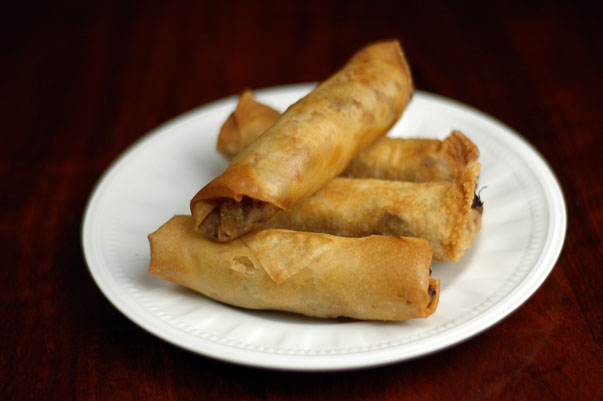
When I went to the nose-to-tail class the other day and they made spring rolls, it reminded me of making spring rolls with Ming years ago. When I make them I take several minutes to get the filling in just the right spot and the rolls all nice and tight.
In seemingly one sweeping motion, she can make a spring roll and glue the end and have it on the plate in about 30 seconds without one bit of paste on her nose. Not one piece of bean sprout poking out anywhere and no holes in either end either. So much for practice. or my butterfingers. I just don’t make them often enough, maybe.
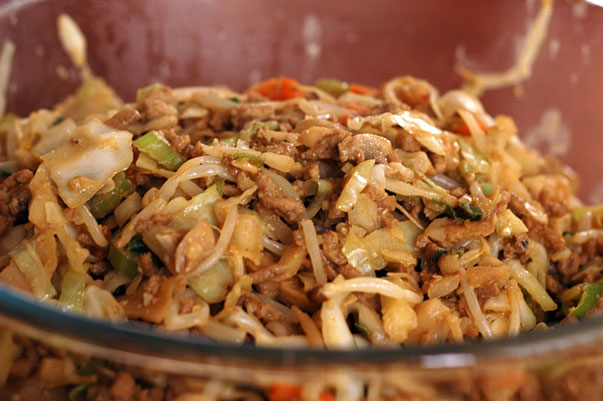
Ming told me once that if she doesn’t have rice every other day she gets really stressed. I don’t think there’s any food that I must have in order to feel good, do you? I suppose when you’re raised having rice several times a day, it becomes a part of your life.
Ming’s a terrific cook and one day, my little princess Jade who’s 7 going on 25 and who eventually shall rule the world, hopefully will cook as well as her mother. My son is much like his mother and teases everyone and Ming is no exception.
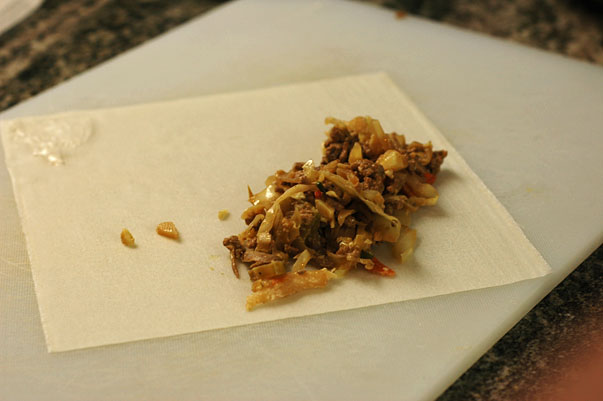
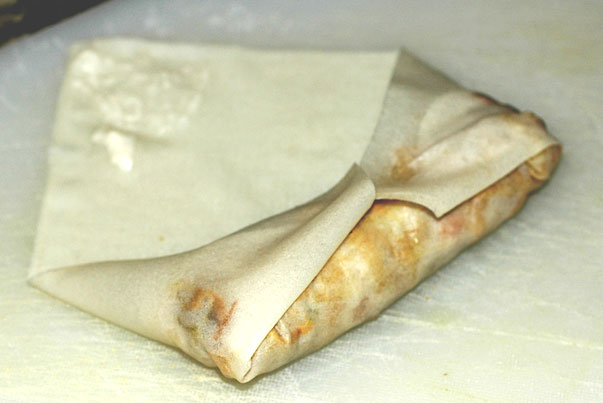
If you read the recipe from the class I went to on Sunday, most people don’t have fresh galangal and fresh turmeric lying around and maybe not even fresh ginger in their house all the time. Neither did I and I wasn’t going out in the rain to get them so I used what I had in the house. The spring rolls turned out crunchy and full of flavor.
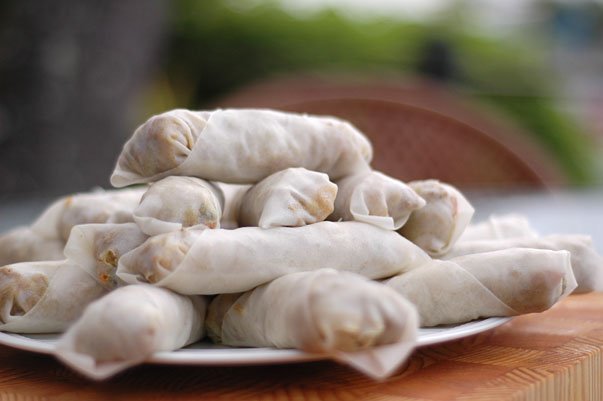
Would they have been better with all fresh ingredients? I imagine they would be but that’s not the point of this post. I proved that I could take mostly pantry items and a bag of crunchy salad mix John bought and a packet of frozen spring roll wrappers and come up with a zesty spring roll fit for family or company. As you can see I cooked 5 spring rolls. There are only two of us here. I ate the one that was cut for the photo and John ate the other 4. Inhaled, I should have said. He really liked them and is glad we have 15 more in the freezer.
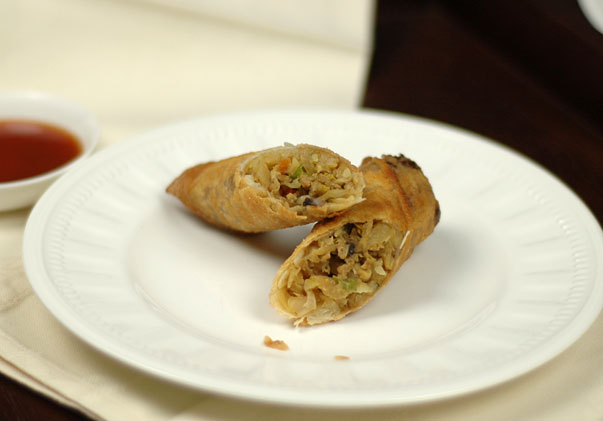
This was the best spring roll I’ve made so far!
- 1 packet spring roll wrappers
- 300 grams or one package of crunchy salad mix with lots of cabbage
- 1 onion, chopped
- Bean sprouts (fresh or canned)
- 2 cloves garlic, finely chopped or crushed
- 500 grams (1 lb) minced pork
- 1 tsp powdered ginger or 1 tbs of fresh ginger
- 1 tsp powdered turmeric
- 1 tsp paprika
- 1 tsp chilli powder (can use less if you don't like it too spicy)
- 1 tsp ground cumin
- salt and pepper to taste
- soy sauce to taste
- ½ can coconut milk
- ½ cup water
- ½ cup crushed macadamia nuts (I left good sized pieces because I like the crunch)
- oil for frying
- Place the nuts, onion, garlic and spices in a frying pan with 2 tablespoons of oil and over low heat gently cook the mixture until aromatic.
- Add the coconut milk and half cup of water and cook until thickened
- Season with soy sauce, salt and more chilli if you want it even hotter.
- Add pork and simmer until meat is cooked.
- In another pan saute all the vegetables to your desired doneness, I only cooked mine for just a few minutes as I like my spring rolls crunchy.
- Add the pork mixture and cook for 2 minutes, stirring well to combine.
- Set mixture aside to cool. (I put mine in the fridge for 45 minutes)
- Separate the spring rolls. This can take some time as the little buggers stick together, so leave the mixture in the refrigerator until you've got them all separated.
- Make a paste of flour and water that you can brush on the ends of the wrappers.
- Place a spoonful of mixture in one corner of the wrapper and fold the end over the mixture and squeeze it together to tighten the roll and roll til you're in the middle of the wrapper.
- Fold both sides into the middle and put some paste on the top end.
- With the flat of your hand, push the roll to the end.
- Set in one layer on a plate.
- Keep going until you've used up all the mixture (or eat the last bits with a spoon like I did)
- Let the rolls sit for an hour before frying or keep enough to fry and freeze the remainder.
- Heat oil to 180C/350F and place one roll in the middle and cook for 30 seconds and turn over and cook for another 30 seconds and move to the side of the pan and place another spring roll in the center of the pan and continue.
- As the previous rolls become golden brown, remove and place on absorbent paper.
- Serve with a mixture of plum sauce and soy sauce.

